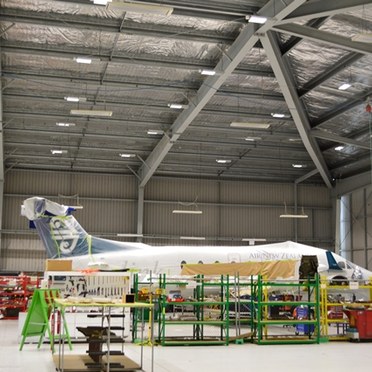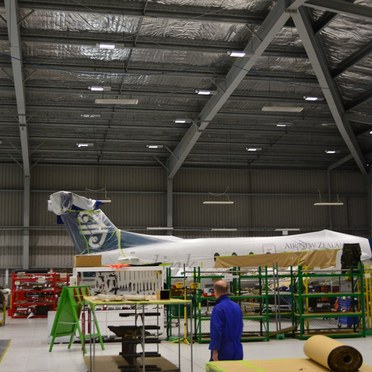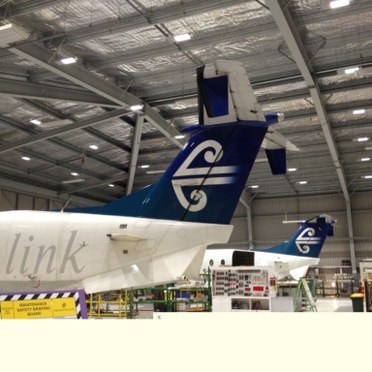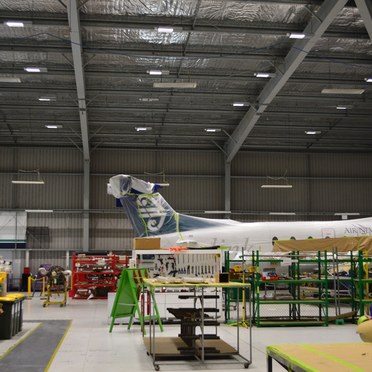Eagle Air
- Lamp efficacy
Lamp efficacy
Ensuring the lamp efficiently converts electricity into light (lm/W).
- Ballast classification
Ballast classification
Controlling the electricity supply to the lamp (Energy Efficiency Index).
- Luminaire distribution
Luminaire distribution
Controlling light emission using optics which bend and shape the light to the correct location.
- System efficacy
System efficacy
Combining optical and thermal control within the luminaire (luminaire lm/W).
- Presence/absence detection
Presence/absence detection
Presence: Lights automatically turn on/off with movement. Absence: Lights automatically turn off and must be manually switched on.
- Daylight detection
Daylight detection
Artificial lighting which responds to the natural light conditions.
- Constant illuminance
Constant illuminance
A function designed to produce correct light levels for the duration of the maintenance period.
- Task-scene setting
Task-scene setting
Allowing the user to set scenes and adapt the lighting to different tasks.
- Timed off
Timed off
Automatic cut-off can be installed to turn all lights off during unoccupied hours.
- Task lighting
Task lighting
Lighting task areas with the correct amount of light.
- Zoning of lighting
Zoning of lighting
Lighting is zoned according to area use.
- Maintenance schedule
Maintenance schedule
Maintenance must be performed in response to product age, performance and environment.
- Waste light
Waste light
Eliminating waste light which does not hit the intended target.
- Reflectance
Reflectance
Taking advantage of light which is reflected from the surface within the space.
- Visible smart metering
Visible smart metering
Results of actions can be quickly seen as increased or decreased energy use to encourage responsible energy consumption.
About Eagle Air
Eagle Air is a wholly owned subsidiary of Air New Zealand with its Head Office and main Engineering Service based in Hamilton. Eagle Air operates 18 Beech 1900D aircraft servicing over 21 destinations on Air New Zealand's domestic regional routes and carries approximately 730,000 passengers per year. It employs over 200 staff including 33 engineers located in both Hamilton and Blenheim.
The Brief
Early in 2013 the management of Eagle Air Ltd approached J A Russell Ltd seeking a lighting upgrade for their Hamilton engineering maintenance hangar. The brief was to deliver better light quality, reduce maintenance costs and explore potential energy savings through utilisation of excellent daylight penetration when the hangar doors were open.
The Solution
The provision of a lighting subsidy from EECA Business Partnership meant that J A Russell Ltd was able to offer its client the best option of a one for one retrofit by replacing the old 400W metal halide fluorescent lights with a more efficient LED lighting system. 58 x 150W HiPak Pro LED luminaires suspended to 12m were installed in the 40m x 30m hangar. Each HiPak Pro LED has its own integral daylight and presence detecting sensor. The LED lights have a 50,000 hour lifetime and are expected to drastically reduce maintenance costs. To the delight of the customer, required lighting levels were achieved with an energy saving of 66%. Overall, the system will pay for itself in just 2.90 years.
Key Facts
- Luminaires installed: HiPak Pro LED
- Total area covered 40m x 30m
- Total energy saving 66%
- Total financial saving $13,754 p.a.
- Luminaire wattage before: 435W
- Luminaire wattage after: 150W
- Total energy consumption before: 91,000 KW
- Total energy consumption after: 31,668 KW
- Payback in years 2.90




